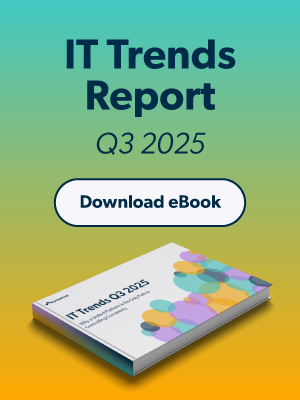Updated on February 14, 2025
Cybersecurity threats are becoming more sophisticated. This places immense pressure on IT professionals to stay ahead of attackers while ensuring legitimate users have seamless access to resources. The traditional one-size-fits-all access control methods are no longer adequate to address the complexities of modern enterprise environments. This is where Adaptive Access Control (AAC) steps in.
AAC offers a smarter, dynamic approach to managing access within today’s fast-evolving cybersecurity landscape. Instead of static rules that treat every access attempt the same, AAC evaluates users and their activities in real time to make informed, context-based decisions.
This article provides a deep dive into Adaptive Access Control, how it operates, and why it is crucial for organizations looking to enhance security, improve operational efficiency, and deliver excellent user experiences.
What is Adaptive Access Control?
Adaptive Access Control is a modern, dynamic approach to identity and access management (IAM) that adjusts access permissions based on real-time evaluation of various contextual factors. These factors may include the user’s behavior, geographic location, device type, time of access, and the sensitivity of the resource they’re attempting to access.
Key Features of Adaptive Access Control
- Dynamic Decision-Making: Unlike traditional static access controls, AAC dynamically assesses risk by analyzing contextual data.
- Real-Time Analytics: Real-time machine learning (ML) and analytics power AAC for enhanced accuracy in decision-making.
- Contextual Awareness: Adaptive systems use multiple data points to understand the context of a user’s access request.
For example, AAC might grant full access to a legitimate user logged in from a company device in a trusted location but require multi-factor authentication (MFA) if the same user logs in from an unknown device in a different country.
How It’s Different from Traditional Access Control
Traditional access controls rely on predefined roles or static conditions to grant or deny access.
For instance, Role-Based Access Control (RBAC) might assign specific permissions to employees based on their job titles. This rigid approach fails to account for nuances like unauthorized access from compromised credentials or unusual activity patterns.
AAC, on the other hand, focuses on context to refine access decisions. It’s a more dynamic and responsive method that aligns with Zero Trust principles by continuously validating trust before granting access.
How Does Adaptive Access Control Work?
AAC operates by integrating multiple layers of information and applying intelligent policies that work seamlessly across various environments, from on-premise data centers to cloud services.
Key Contextual Factors and Policies
- Device Type and Configuration: AAC identifies whether the user is accessing the system from a known, compliant device. Unrecognized or jailbroken devices might face access restrictions.
- Geographic Location: Access attempts from untrusted regions or flagged IPs can trigger additional security steps, such as requiring MFA.
- Behavior Analysis: Historical user behavior is crucial for detecting deviations. For example, a user logging in late at night when they typically access during business hours could raise a red flag.
- Session Timing and Duration: AAC analyzes login times and session lengths to spot irregularities, ensuring time-based policies are enforced.
The Role of Real-Time Analytics and Machine Learning
At the heart of AAC is real-time analytics powered by machine learning algorithms. These engines consolidate the contextual data points to accurately assess the risk of each access request.
For example, they might flag repeated failed login attempts as suspicious or learn legitimate patterns to reduce unnecessary authentication prompts.
AAC then uses adaptive actions to adjust requirements based on its risk evaluation. For low-risk situations, seamless access is provided. In cases where moderate risks are detected, multi-factor authentication (MFA) could be triggered. Highly suspicious login attempts, such as those linked to known phishing activities, are blocked entirely.
Example Scenarios
Corporate Environment
A remote employee accessing company software via their usual laptop from home would gain unhindered access. However, if the same user attempts login from a café, AAC might request MFA before granting access.
Financial Services
When handling high-value transactions, banks often implement additional layers of security to protect both the customer and the institution. This could include biometric verification methods such as fingerprint scans, facial recognition, or voice authentication.
These measures help mitigate fraud risks by ensuring that only authorized individuals can complete sensitive transactions, adding an extra level of trust and security.
Healthcare Industry
A doctor accessing electronic health records (EHR) from a secure hospital network would experience seamless access.
However, if the same doctor attempts to log in from a personal tablet while traveling, AAC may enforce additional security layers, such as one-time passwords or device authentication, to ensure patient data remains protected.
Benefits of Adaptive Access Control
AAC offers substantial advantages for enterprise environments, balancing security with usability.
Enhanced Security
When done right, AAC effectively mitigates sophisticated threats, such as phishing and credential theft, by implementing dynamic, context-aware policies. Additionally, it reduces the attack surface by granting access only under trusted conditions.
Improved User Experience
AAC minimizes unnecessary interruptions for legitimate users by providing frictionless access under normal circumstances, while also helping to build user trust by offering a secure yet seamless experience.
Scalability
Ideal for organizations with remote and hybrid work models, this solution adapts seamlessly to large, distributed teams. It excels in dynamic environments, making it perfect for industries that rely on cloud-based applications.
Challenges and Limitations of Adaptive Access Control
While AAC is advantageous, there are challenges to consider.
Dependence on Data Quality
Effective Adaptive Access Control (AAC) relies heavily on accurate and comprehensive data to make informed decisions.
Incomplete or poor-quality data can result in incorrect access decisions, potentially blocking legitimate users or granting access to unauthorized individuals. Ensuring robust data collection and processing is critical for the success of AAC systems.
Privacy Concerns
The extensive data collection required for contextual evaluation, such as user behavior, geolocation, or device details, can raise significant privacy concerns. If this data is not managed carefully, it could lead to violations of privacy laws or user trust.
Organizations must prioritize transparent data handling, compliance with regulations, and secure storage to mitigate these risks.
Implementation Complexity
The initial setup of AAC systems can be complex and resource-intensive. Integrating AAC into existing Identity and Access Management (IAM) platforms, configuring policies, and tuning the system for optimal performance require time, technical expertise, and financial investment.
Without proper planning and support, implementation challenges can delay the deployment of AAC.
Risk of Over-Reliance on Automation
While automation is a key feature of AAC, relying entirely on automated systems can pose risks. Inadequate human oversight may lead to legitimate users being incorrectly blocked or inefficiencies in resolving access issues. Balancing automation with human monitoring is essential to ensure the system remains effective and user-friendly.
Implementing Adaptive Access Control
To integrate AAC into your organization’s IAM infrastructure effectively, follow these steps:
Assess Your Requirements
Start by evaluating the specific risks, vulnerabilities, and workflows within your organization that Adaptive Access Controls (AAC) can address.
Consider areas where access is currently too lenient or where authentication processes need strengthening. Identify high-risk scenarios, such as remote logins or access to sensitive data, to effectively prioritize your AAC deployment.
Select the Right Tools
Explore solutions that best fit your organization’s needs. Popular options include Azure AD Conditional Access, Okta Adaptive MFA, or JumpCloud, a versatile directory platform used for managing identities and devices of all types.
Evaluate features like real-time risk assessment, integration capabilities, and ease of use to ensure the tool aligns with your security goals.
Configure Policies and Train Staff
Once you’ve selected the tools, tailor adaptive policies to match your organization’s unique workflows and risk tolerance. For example, you might require stricter authentication for users accessing data outside of office hours or from unfamiliar locations.
Additionally, provide comprehensive training for your IT team and key staff members to ensure they understand how to configure, fine-tune, and manage AAC settings effectively.
Monitor and Adjust
Implement analytics tools to continuously monitor AAC performance and access patterns. Regularly review reports to identify anomalies, refine your policies, and improve overall security. Strive to strike a balance between minimizing false positives and maintaining a smooth user experience.
Ongoing adjustments will ensure your AAC system evolves with your organization’s changing needs and threats.
Best Practices to Consider
- Balance security measures with user experience by defining thresholds carefully.
- Regularly audit policies to ensure they remain relevant as the threat landscape evolves.
- Combine AAC with other security frameworks like Zero Trust for maximum protection.
Real-World Applications of Adaptive Access Control
Financial Services
Banks often use Adaptive Access Control (AAC) to enhance security and reduce the risk of unauthorized transactions. By placing real-time restrictions on high-value operations, AAC monitors user behaviors, transaction patterns, and contextual factors like location or device.
This ensures that only legitimate users can carry out sensitive activities, providing both enhanced security and customer trust.
Corporate Environments
For companies with hybrid or remote workforces, Adaptive Access Control (AAC) plays a key role in securing sensitive data. It restricts system access to managed devices, approved geographical locations, and predefined working hours.
By dynamically adjusting permissions based on user roles and behaviors, AAC helps organizations maintain operational efficiency while ensuring robust protection against cyber threats.
Healthcare
Hospitals and healthcare organizations rely on Adaptive Access Control (AAC) to safeguard electronic health records (EHRs) and other critical patient information. AAC ensures compliance with HIPAA regulations by limiting access to authorized staff based on their roles, locations, and devices.
At the same time, it maintains accessibility for healthcare providers who need quick and secure access to records during emergencies, balancing security with patient care.
Adaptive Access Control represents a significant evolution in identity and access management. By dynamically assessing real-time data to make informed decisions, AAC ensures your organization stays secure without compromising on user usability.
Frequently Asked Questions
What is the primary purpose of Adaptive Access Control?
AAC dynamically adjusts permissions based on contextual factors to ensure robust security and seamless user experiences.
How does Adaptive Access Control enhance user experience?
It reduces unnecessary authentication steps by analyzing user context, offering a frictionless experience for legitimate users.
What are some examples of adaptive policies?
Examples include requiring MFA for logins from untrusted locations or limiting access to specific resources during high-risk activities.
Is Adaptive Access Control suitable for small organizations?
Yes, many AAC tools are scalable and can meet the needs of small to midsize businesses.
What are the main differences between AAC and traditional access control methods?
Traditional methods use static rules, while AAC adapts dynamically to contextual data, offering tailored and robust security measures.





